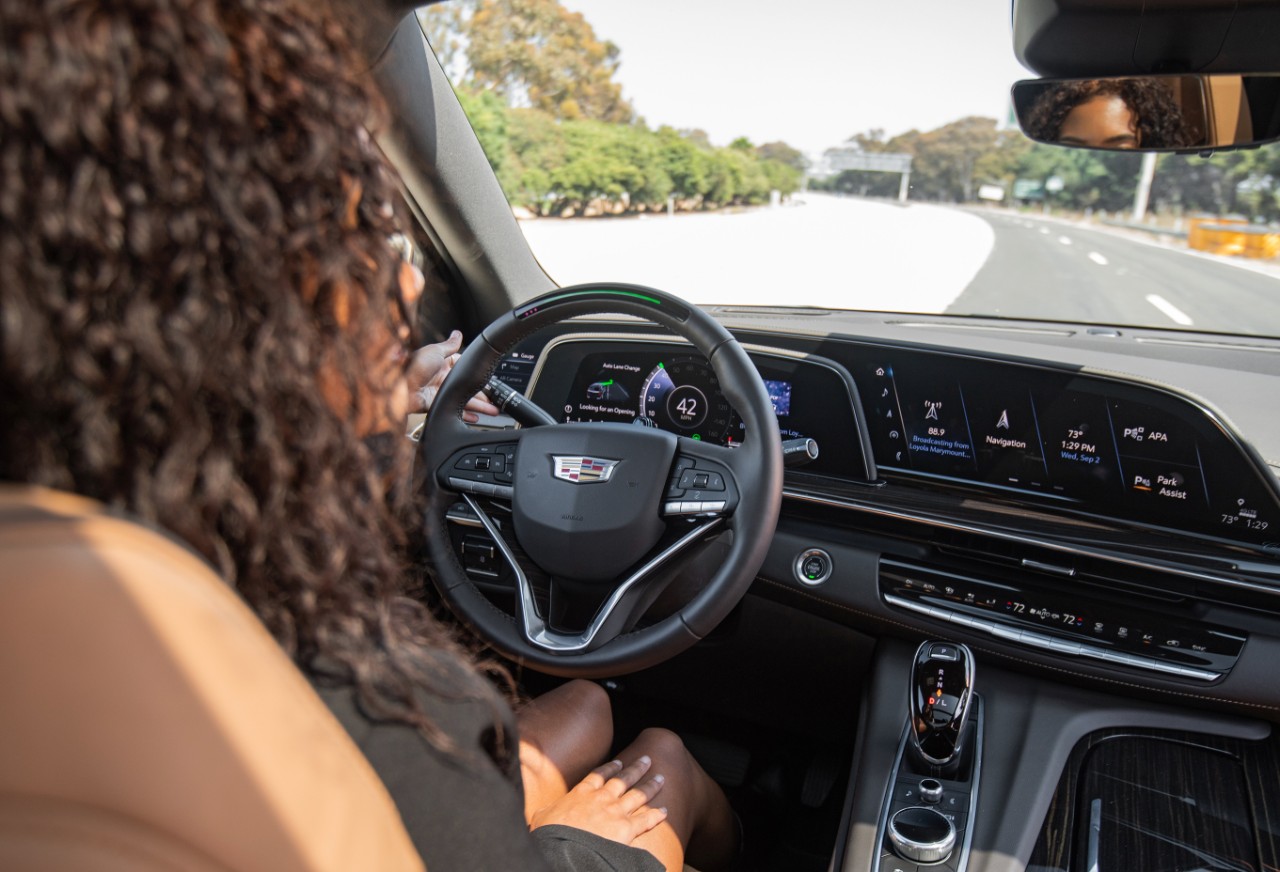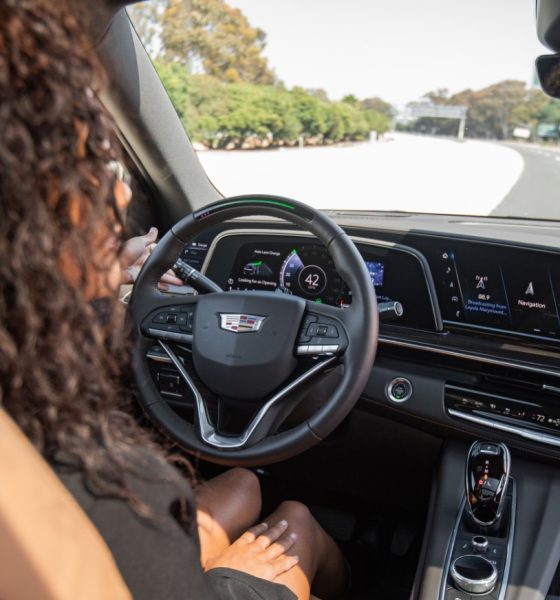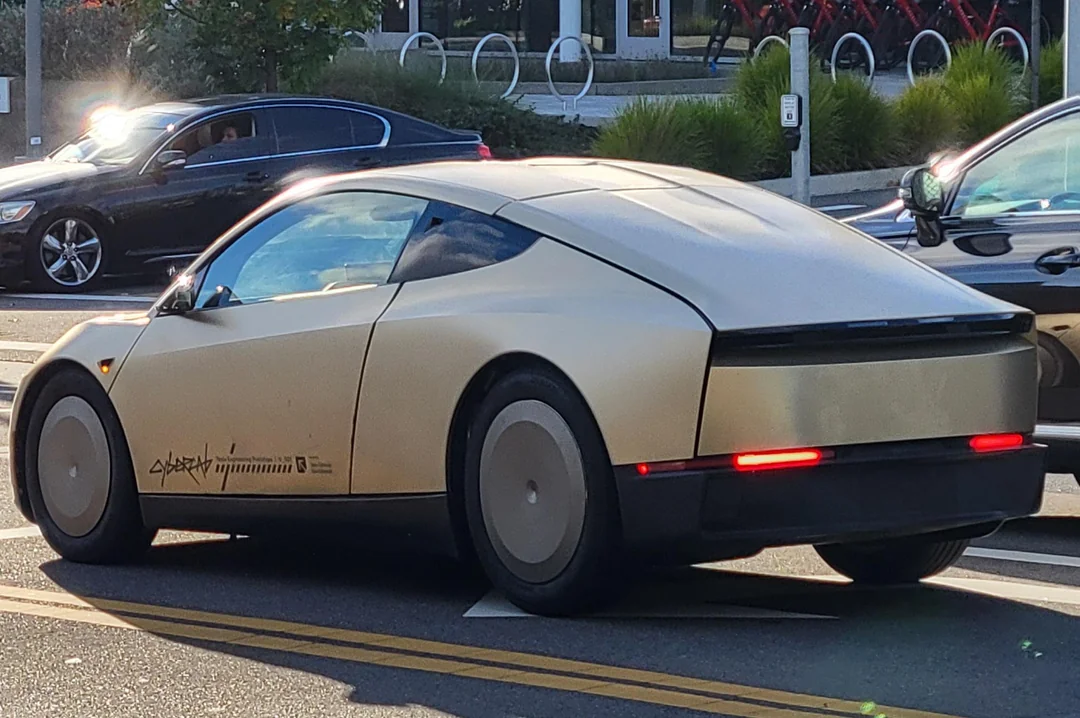

News
Survey shows Americans don’t trust self-driving cars. They also don’t know you can’t buy one.
A new survey revealed that a startling number of Americans feel less safe in a self-driving vehicle. However, the same survey also revealed that nearly one-in-four Americans believe you can currently buy a vehicle that is designed to let drivers take their eyes off the road.
The survey from Policygenius revealed that 76 percent of respondents are not convinced of a self-driving vehicle’s accuracy or safety, and they feel less safe in one rather than a human-controlled car. Additionally, 73 percent of people said they feel less safe knowing other people on the road are traveling in cars with self-driving features.
As self-driving features, semi and fully-autonomous vehicles begin to become more popular with companies like Tesla, Waymo, Cruise, and others pushing their driver assistance systems; the future is undoubtedly here. However, consumers are skeptical of the technology and its capabilities.
“Whether because of road rage, reckless driving, or car accidents, it’s understandable that many people are wary of taking their eyes off the road and relying on a self-driving car,” Rachel Brennan of Policygenius said. “As advances in autonomous vehicle technology continue, auto companies and insurance companies will need to resolve a number of challenges, from helping people feel safe on the road to navigating new insurance implications, like who is at fault in an autonomous vehicle incident.”
33 percent of respondents also stated that a car with full self-driving capability would still require constant attention. 80 percent said they would not pay more to own a car with self-driving features.
Unfortunately, this is not the first study that has supported these claims. AAA revealed in May 2022 that 85 percent of people are still fearful or unsure of self-driving tech; a number that has stayed relatively steady for several years, the survey’s report said. 85 percent also stated they would not feel comfortable using a self-driving vehicle to transport their loved ones.
The issue of liability also seems to raise some concerns with consumers. The survey said Americans are divided at 50/50 on who should be held responsible if a car crashes while self-driving features are in control: the driver or the manufacturer.
The issue is that consumers are not educated enough on the capabilities, or even the availability of self-driving vehicles. The same survey showed 24 percent of consumers believed fully-autonomous vehicles are available to buy and drive right now, which simply is not true.
RELATED:
General Motors’ Cruise taxis to expand to Phoenix and Austin
Self-driving vehicles are still years away, but semi-autonomous functionalities are still highly efficient and widely available across many manufacturers. Nearly every vehicle out there has some sort of driver assistance feature, which includes lane centering or traffic-aware cruise control. However, there is not a vehicle on the market right now that is capable of full autonomy, which would mean a driver could sleep during the vehicle’s operation.
You can’t necessarily blame consumers, though. In a quest for clicks, ad dollars, and viewership, YouTubers and other social media influencers have caricatured the capabilities of these vehicles, which has put out a false narrative of the real-world abilities of vehicles with self-driving features. No matter what you see or read, know that you or anyone else cannot walk onto a dealership lot or log onto a website and buy a car that drives you places. It does not exist.
I’d love to hear from you! If you have any comments, concerns, or questions, please email me at joey@teslarati.com. You can also reach me on Twitter @KlenderJoey, or if you have news tips, you can email us at tips@teslarati.com.

News
Tesla Model 3 named New Zealand’s best passenger car of 2025
Tesla flipped the switch on Full Self-Driving (Supervised) in September, turning every Model 3 and Model Y into New Zealand’s most advanced production car overnight.

The refreshed Tesla Model 3 has won the DRIVEN Car Guide AA Insurance NZ Car of the Year 2025 award in the Passenger Car category, beating all traditional and electric rivals.
Judges praised the all-electric sedan’s driving dynamics, value-packed EV tech, and the game-changing addition of Full Self-Driving (Supervised) that went live in New Zealand this September.
Why the Model 3 clinched the crown
DRIVEN admitted they were late to the “Highland” party because the updated sedan arrived in New Zealand as a 2024 model, just before the new Model Y stole the headlines. Yet two things forced a re-evaluation this year.
First, experiencing the new Model Y reminded testers how many big upgrades originated in the Model 3, such as the smoother ride, quieter cabin, ventilated seats, rear touchscreen, and stalk-less minimalist interior. Second, and far more importantly, Tesla flipped the switch on Full Self-Driving (Supervised) in September, turning every Model 3 and Model Y into New Zealand’s most advanced production car overnight.
FSD changes everything for Kiwi buyers
The publication called the entry-level rear-wheel-drive version “good to drive and represents a lot of EV technology for the money,” but highlighted that FSD elevates it into another league. “Make no mistake, despite the ‘Supervised’ bit in the name that requires you to remain ready to take control, it’s autonomous and very capable in some surprisingly tricky scenarios,” the review stated.
At NZ$11,400, FSD is far from cheap, but Tesla also offers FSD (Supervised) on a $159 monthly subscription, making the tech accessible without the full upfront investment. That’s a game-changer, as it allows users to access the company’s most advanced system without forking over a huge amount of money.
News
Tesla starts rolling out FSD V14.2.1 to AI4 vehicles including Cybertruck
FSD V14.2.1 was released just about a week after the initial FSD V14.2 update was rolled out.

It appears that the Tesla AI team burned the midnight oil, allowing them to release FSD V14.2.1 on Thanksgiving. The update has been reported by Tesla owners with AI4 vehicles, as well as Cybertruck owners.
For the Tesla AI team, at least, it appears that work really does not stop.
FSD V14.2.1
Initial posts about FSD V14.2.1 were shared by Tesla owners on social media platform X. As per the Tesla owners, V14.2.1 appears to be a point update that’s designed to polish the features and capacities that have been available in FSD V14. A look at the release notes for FSD V14.2.1, however, shows that an extra line has been added.
“Camera visibility can lead to increased attention monitoring sensitivity.”
Whether this could lead to more drivers being alerted to pay attention to the roads more remains to be seen. This would likely become evident as soon as the first batch of videos from Tesla owners who received V14.21 start sharing their first drive impressions of the update. Despite the update being released on Thanksgiving, it would not be surprising if first impressions videos of FSD V14.2.1 are shared today, just the same.
Rapid FSD releases
What is rather interesting and impressive is the fact that FSD V14.2.1 was released just about a week after the initial FSD V14.2 update was rolled out. This bodes well for Tesla’s FSD users, especially since CEO Elon Musk has stated in the past that the V14.2 series will be for “widespread use.”
FSD V14 has so far received numerous positive reviews from Tesla owners, with numerous drivers noting that the system now drives better than most human drivers because it is cautious, confident, and considerate at the same time. The only question now, really, is if the V14.2 series does make it to the company’s wide FSD fleet, which is still populated by numerous HW3 vehicles.
News
Waymo rider data hints that Tesla’s Cybercab strategy might be the smartest, after all
These observations all but validate Tesla’s controversial two-seat Cybercab strategy, which has caught a lot of criticism since it was unveiled last year.

Toyota Connected Europe designer Karim Dia Toubajie has highlighted a particular trend that became evident in Waymo’s Q3 2025 occupancy stats. As it turned out, 90% of the trips taken by the driverless taxis carried two or fewer passengers.
These observations all but validate Tesla’s controversial two-seat Cybercab strategy, which has caught a lot of criticism since it was unveiled last year.
Toyota designer observes a trend
Karim Dia Toubajie, Lead Product Designer (Sustainable Mobility) at Toyota Connected Europe, analyzed Waymo’s latest California Public Utilities Commission filings and posted the results on LinkedIn this week.
“90% of robotaxi trips have 2 or less passengers, so why are we using 5-seater vehicles?” Toubajie asked. He continued: “90% of trips have 2 or less people, 75% of trips have 1 or less people.” He accompanied his comments with a graphic showing Waymo’s occupancy rates, which showed 71% of trips having one passenger, 15% of trips having two passengers, 6% of trips having three passengers, 5% of trips having zero passengers, and only 3% of trips having four passengers.
The data excludes operational trips like depot runs or charging, though Toubajie pointed out that most of the time, Waymo’s massive self-driving taxis are really just transporting 1 or 2 people, at times even no passengers at all. “This means that most of the time, the vehicle being used significantly outweighs the needs of the trip,” the Toyota designer wrote in his post.
Cybercab suddenly looks perfectly sized
Toubajie gave a nod to Tesla’s approach. “The Tesla Cybercab announced in 2024, is a 2-seater robotaxi with a 50kWh battery but I still believe this is on the larger side of what’s required for most trips,” he wrote.
With Waymo’s own numbers now proving 90% of demand fits two seats or fewer, the wheel-less, lidar-free Cybercab now looks like the smartest play in the room. The Cybercab is designed to be easy to produce, with CEO Elon Musk commenting that its product line would resemble a consumer electronics factory more than an automotive plant. This means that the Cybercab could saturate the roads quickly once it is deployed.
While the Cybercab will likely take the lion’s share of Tesla’s ride-hailing passengers, the Model 3 sedan and Model Y crossover would be perfect for the remaining 9% of riders who require larger vehicles. This should be easy to implement for Tesla, as the Model Y and Model 3 are both mass-market vehicles.









